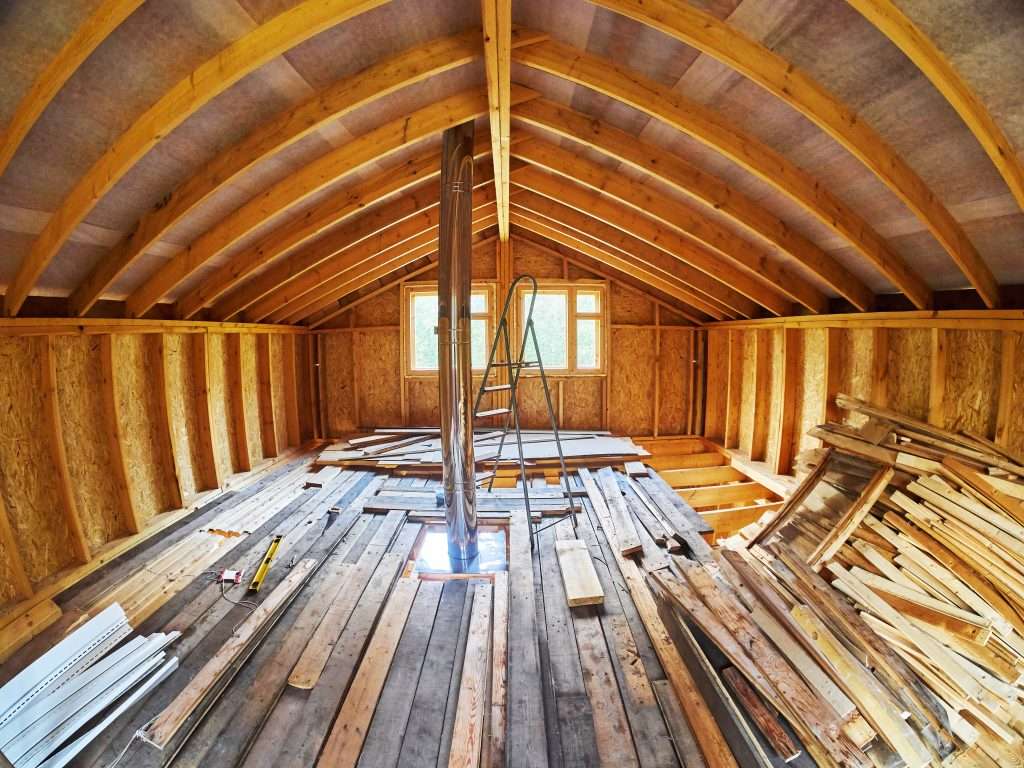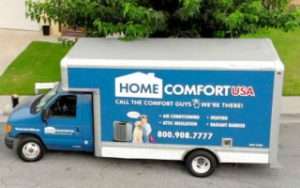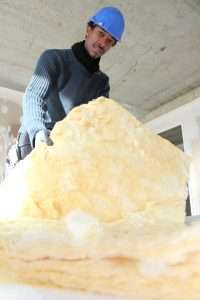In the sphere of eco-friendly and comfortable habitation, the importance of home insulation is often misunderstood. It ensures warmth in winter, cools our homes in summer, and boosts the efficiency of our HVAC systems. However, many homeowners still lack a comprehensive understanding of home insulation. This article explores the critical role of home insulation in maintaining comfort, its interconnection with your HVAC system, the various types accessible, and the significance of expert installation and upkeep.
The Role of Insulation in Home Comfort—How It Works
Insulation in your home essentially acts as a thermal barrier. It resists heat’s natural tendency to move from warmer areas to colder ones. During cold weather, insulation traps the warmth inside your home and prevents it from escaping into the frigid outdoors. Conversely, when it’s hot, it hinders the scorching heat from infiltrating indoors.
Often, unexpected fluctuations in the indoor temperature—a sudden chill or a heat flash—are due to inadequacies in your home’s insulation system. A properly insulated home maintains a stable temperature, assuring your comfort regardless of the weather whims.
Insulation works by reducing heat transfer: it stops the warm air in your home from escaping during winter, and keeps it outside during the summer. As a result, you don’t have to overwork your heating or cooling systems to adjust for heat loss or gain. This is how insulation maintains an even, comfortable temperature indoors all year round.
In the context of insulation, the term ‘thermal resistance’ or ‘R-value’ is one to keep in mind. It quantifies the insulation material’s resistance to conductive heat flow. A higher R-value translates to a more effective insulation system.
By understanding the pivotal role of insulation in maintaining home comfort, you’re a step closer to achieving a more energy-efficient and comfortable living environment. However, remember that insulation is just one facet of the whole. Choosing insulation that caters to your home’s specific needs and ensuring its correct installation and maintenance are key to maximizing its effectiveness. We’ll delve deeper into these aspects in subsequent sections.
The Importance of Proper Insulation
Proper insulation in your home isn’t merely a way to sustain an agreeable indoor climate; it also significantly impacts the performance and lifespan of your heating, ventilation, and air conditioning (HVAC) system. If your insulation isn’t efficient, your HVAC system will need to exert additional effort, consuming more energy and potentially stressing itself to counteract constant thermal exchange.
On the other hand, when your insulation is well-balanced, it eases the load on your HVAC system so it won’t have to push beyond its capacity to maintain your desired climate. This results in less damage to your HVAC equipment, potentially reducing your utility bills.
Proper insulation can make all the difference between a HVAC system that runs effortlessly, and one that struggles to maintain your comfort requirements. Although insulation might appear as a silent component in your home’s comfort, it’s importance in enhancing your HVAC system’s performance and lifespan can’t be understated.
This is evidence of how pivotal insulation is, not only for your home’s comfort but also for the efficient function and durability of your HVAC system. A well-insulated home equals a well-performing HVAC system.
Common Types of Home Insulation
Different insulation types have distinct features, advantages, and possible downsides. Let’s explore the most commonly used varieties in contemporary residences.
Fiberglass insulation
Starting with fiberglass insulation, widely utilized due to its competent performance and cost-effectiveness. Its familiar form, often pink or yellow fluffy batts, finds its place between wall studs, floor joists, and ceiling rafters in numerous homes.
Cellulose insulation
Moving on to cellulose insulation, crafted from recycled newspaper infused with flame-resistant chemicals. It brings an environmentally conscious approach to insulation, having a superior R-value per inch compared to fiberglass, making it a favourite among homeowners.
Spray foam insulation
Next is the powerhouse, spray foam insulation, with its impressive insulating properties. Upon application, it expands to fill crevices and forms an excellent thermal barrier. While it’s pricier, its remarkable energy conservation advantages often justify the initial cost.
Mineral wool insulation
For environmentally conscientious homeowners, mineral wool insulation is an attractive option. Composed of rock or slag, it is naturally flame-resistant and has soundproofing abilities. However, it may not insulate as effectively as its contemporaries.
Rigid foam board insulation
Lastly, the rigid foam board insulation offers commendable insulating value per inch and is frequently employed for insulating basements or as external house sheathing.
The optimal choice of insulation for your home depends on a number of factors, including your individual home requirements, local weather conditions, and financial plan. The goal is to find a balance between cost, efficiency, and adaptability to your home’s layout and aesthetics. We’ll explore this further in the next section.
Which Type Of Insulation Is Right for Your Home?
The quest for the perfect insulation for your home is like assembling a complex puzzle. Each piece must fit snugly into its unique spot, and every choice matters. Key factors to consider are your local climate, your home’s design, and your budget. Climate dictates the optimal insulation R-value, with colder climates demanding higher R-values. The structure and design of your home also play a part, as certain types of insulation are better suited to specific areas in your home. For example, rigid foam board insulation could be the star in your basement, while spray foam might be perfect around your windows and doors, sealing those pesky drafts.
Budget, of course, is another vital factor. Striking the right balance between cost and insulation effectiveness can feel like a high-wire act, but it’s worth the effort. Your wallet may initially feel the pinch with a more expensive insulation type like spray foam, but remember, it’s a long-term investment in energy savings. Meanwhile, more budget-friendly options like fiberglass or cellulose might be a better fit for your current financial scenario.
In your journey through the home insulation landscape, remember that one size doesn’t fit all. Each part of your home may need a different insulation type to maximize its efficiency. From your attic’s eaves to your basement’s corners, the right insulation can make all the difference in maintaining a comfortable home and an efficient HVAC system.
Professional Insulation Installation and Maintenance
The inclination to tackle your home’s insulation project can be strong, but tasks like this are often best entrusted to seasoned professionals like the HVAC team at Home Comfort USA. Those who specialize in insulation installations possess extensive experience and detailed knowledge of insulation requirements, are equipped with the necessary tools, and pay attention to the specifics of your home. These factors can set apart a merely adequate job from a stellar insulation application.
Different insulation materials require different installation approaches. The soft pink fiberglass batts might seem easy to handle, but meticulous measuring, cutting, and fitting are required to prevent any gaps which may threaten the efficacy of your home’s thermal barrier. Cellulose insulation requires the use of a blower to achieve an optimal installation, and spray foam insulation needs particular tools and a careful approach to guarantee a uniform, flawless application.
In addition, HVAC insulation pros have the insight to determine the right amount of insulation, its positioning, and the optimal installation methods. They can identify prospective complications you might miss, such as ventilation requirements or the existence of dampness. Both of these factors could gravely impact insulation effectiveness. Furthermore, these professionals have a clear understanding of construction codes and will ensure that your insulation complies with all requisite standards.
Insulation maintenance is another aspect where professional help can prove to be beneficial. Insulation is usually a low-maintenance component of the house, but regular evaluations can detect potential issues such as water damage, pest invasion, or compressed batts, all of which can compromise the insulation’s R-value. The experienced specialists from Home Comfort USA can promptly and efficiently resolve these issues, ensuring the persistent high performance of your insulation.
Insulation installation isn’t a task to gamble with since your home’s coziness, HVAC efficiency, and energy savings hang in the balance. While the urge to embark on a DIY journey might be appealing, entrusting the insulation process to a professional can guarantee a comfortable and energy-efficient home for the foreseeable future.






